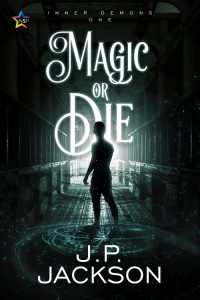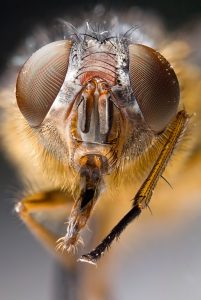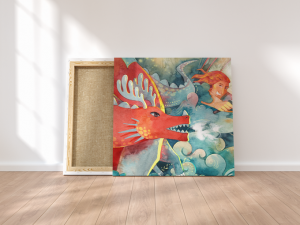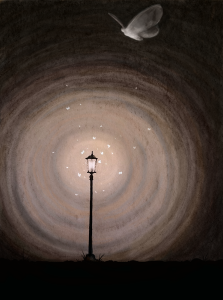An essay by Evangeline Artemisia “Artie” Quelch, as provided by Fiona Moore
Art by America Jones
5 May 1963. Two weeks sealed in the pilot’s cabin on top of the gigantic Shackleton speed-of-light rocket had made me intimately familiar with the size of the universe. Of being approximately sixty-six thousand cubic centimetres of wet warmth pulsating in the dry cold.
“Final attempt,” I said to the picture of Ludmilla Kovalenko, the first human in space, taped up above the controls, as I closed the electrical panel on the left-hand wall. Better to look at the picture than out the window, better not to be reminded of the dark, the tiny, pitiless pointed stars that surrounded me, on and on forever. “Captain Evangeline Artemisia ‘Artie’ Quelch, late of the RAF, currently of the Commonwealth Space Programme, summative report. Communications still out, the surviving Mars colonists in the back wired into the medical tanks, not enough air for another space-walk. If the electrical fix doesn’t work, Milla, we’re just going to drift to Alpha Centauri. Won’t we be a surprise for the space archaeologists in a hundred years’ time?”
Ludmilla gazed back at me. After so long with nobody but Ludmilla to talk to, I fancied I could read the picture’s expressions. What was she saying now? Did she approve? I imagined Ludmilla urging me on.
Do it, comrade.
“Here goes nothing,” I said as I pressed the ignition switch.
To read the rest of this story, check out the Mad Scientist Journal: Winter 2019 collection.
Evangeline Artemisia “Artie” Quelch is an American-born aviatrix and a cosmonaut for the Commonwealth Space Programme. A veteran of the Women Airforce Service Pilots, she defied a postwar gender ban by disguising herself as a man to fly for the British Imperial Airways Corporation. In 1957, she enlisted in the CSP, and was decorated for her role in the rescue of the doomed Mars expedition. Following a term as commander of the Commonwealth Moonbase, she re-enlisted in the Deep Space Rocket Corps and is currently on her way to Alpha Centauri.
Fiona Moore is a writer and academic whose first novel, Driving Ambition, is published by Bundoran Press in autumn 2018. She has written and cowritten a number of articles and guidebooks on cult television, three stage plays and four audio plays. Her short fiction has appeared in, among others, Interzone, Asimov, On Spec, Unlikely Story, and the award-winning anthology Blood and Water. When not writing, she is a Professor of Business Anthropology at Royal Holloway, University of London. More details, and free content, can be found at www.fiona-moore.com.
AJ is an illustrator and comic artist with a passion for neon colors and queer culture. Catch them being antisocial on social media @thehauntedboy.
“Every Little Star” is © 2018 Fiona Moore
Art accompanying story is © 2018 America Jones








